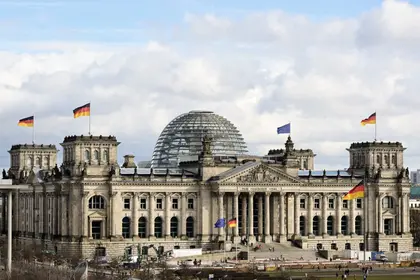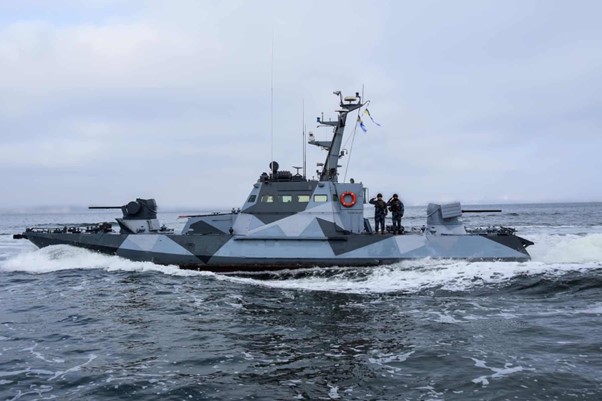Nearly one month into Ukraine’s daring ground force invasion of Russia, both sides seemed to be hunkering down for the long term and no quick end to a nearly unprecedented foreign troop presence on Russian Federation territory is in sight.
Led by special operations troops deploying behind Russian lines in Kursk region weeks before, Ukrainian tank and armored infantry columns openly crossed the Ukraine-Russia frontier on Aug. 6. Kyiv commanders likely committed 5-10,000 men and hundreds of tanks and other armored vehicles to the operation.
JOIN US ON TELEGRAM
Follow our coverage of the war on the @Kyivpost_official.

It was the first time an enemy army had invaded Russia from the west since 1941. Prior to the Ukrainian incursion, the last time the Kremlin’s soldiers had actually fought to defend sovereign territory from a foreign occupier was in 1969, when Red Chinese troops attempted (and ultimately failed) to capture an island in the middle of a river dividing the two countries in east Siberia.

US Freeze on Aid Puts Ukrainian Lives at Risk – Human Rights Watch
Thirty days after formed Ukrainian troops crossed into the thickly populated and industrial Kursk region, in the heart of European Russia, Kremlin statements said Ukrainian ground attacks were still in progress, but local in scale. According to a Wednesday Defense Ministry situation report, Kyiv troops most recently had launched formed attacks aiming to break into the substantial villages of Komarovka, Krenovo and Cherkasskoe Porechnoe. Those assaults gained no ground and Russian defenses inflicted heavy casualties, the statement said.
Russian state-controlled media said Ukraine’s invasion of Russia is well-contained following the deployment of reserve forces to the region and, intensifying air strikes against Ukrainian forces.
Modern Su-34 attack aircraft have deployed laser-guided missiles and GPS-guided glider bombs to hit Ukrainian troops and fortifications in dozens of strikes across the Kursk sector, video published by Russia’s Defense Ministry on Tuesday seemed to show.
During the first three weeks of the offensive Ukrainian forces carved out a salient roughly 45 km (28 miles) wide and 20 km (12 miles) deep into Russian territory, initially against weak resistance.

Independent media widely confirmed that at least 500 Russian soldiers were taken prisoner. The last days of August per reports from both sides have seen a near-total halt to confirmed and even claimed Ukrainian ground gains.
According to Wednesday field reports, along the north edge of the Ukrainian salient, combat was in progress in and around the villages of Aleksandrovka and Zhuravli, some 20 km (12 miles) from the Ukrainian border to the south, and 20 km (12 miles) from the logistically critical E-38 highway to the north.
The Ukrainian combat blogger Militarniy reported Kyiv forces had surrounded 200 members of the Chechnya-recruited paramilitary police unit Akhmat in the village of Zhuravli. Ukrainian troops were, per those reports, maneuvering to take as many Chechens prisoner as possible, to be exchanged for Ukrainian soldiers held by Russia. Some mainstream Ukrainian media picked up the news but did not confirm it.
The Chechen “fighter” Aid in the popular Telegram channel Dnevnik Mrakoportsev (185,000+ followers) claimed Chechen police units fighting alongside regular Russian forces had repelled repeated artillery-backed attacks by Ukraine’s 80th Air Assault and 92nd Mechanized Infantry Brigades towards the villages of Martynovka, Malaya Loknya and Russkiy Porechniy.
He claimed Ukrainian forces suffered “thousands” of casualties. Contradicting Russian accounts, Ukrainian media has widely reported full Ukrainian control of Malaya Loknya and disputed ownership of Martynovka and Russiakiy Porechniy, and that losses to Ukrainian troops were moderate.
The Kremlin-supported milbloggers, Aleksei Zhivov, in a Sept. 2 write-up told his 100,000+ followers: “The AFU [Armed Forces of Ukraine] controls about 950 square km [367 square miles] in the Kursk region…The area of the entire Kursk region is 30,000 square km [11,583 square miles]. With that, except for Sudzha, there is not a single significant settlement in the enemy’s control zone. The AFU has failed to reach larger cities. The Russian army is successfully defending along an established line.”
AFU commander Oleksandr Syrsky, in a Monday situation update to President Volodymyr Zelensky and the national military leadership, said Ukrainian forces control about 1,200 square km (463 square miles) of Russian Federation territory and that “the operation is proceeding as planned.”
Syrsky’s offensive into Russia, according to soldiers’ accounts, is led by armored columns with fast-moving, small groups of soldiers riding in light armored vehicles or pickup trucks, and ordered to bypass Russian defenses if possible. Both sides in the past 72 hours reported Ukrainian mobile groups – or at least unidentified armed men – still at large, at times well behind Russian lines.
Ukrainian raiders hit traffic moving along the Lygov-Kurchatov highway over the weekend, news reports said, hitting at least one Russian army truck column and setting vehicles on fire. The road is 12 to 20 km (8 to 12 km) behind the fighting front. Local motorists should stay home rather than risk driving into ambushes, possibly by Ukrainian forces and possibly by jumpy Russian territorial defense units, Russian state media Roman Sapon’kov said in a Sept. 2 report.
According to Defense Ministry statements, Russian reconnaissance had identified elements of seven Ukrainian combat brigades operating inside Russian territory in Kursk region, and another seven brigades in reserve in Ukraine’s adjacent Sumy region. At full strength, 14-15 Ukrainian combat brigades would be a small army of 20-25,000 men and 1,000+ armored vehicles.
According to Ukrainian open source researchers, Russian commanders have scrambled to deploy units to block the Ukrainians, but over the past month have built up firepower roughly on par with their opponents – but far less powerful than needed for an effective counter-offensive. Civilian officials have grappled with tens of thousands of refugees.
Aleksei Smirnov, governor of Kursk region, in a Monday statement, said that the families of school children forced to evacuate their homes because of Ukraine’s invasion, would receive a state assistance payment of 3,000 rubles ($34) for school supplies. He appealed to voters to be understanding of the difficulties faced by local government.
“We are having to make many decisions on the fly and we are creating a structure. We need to increase our patience. Everything will come out all right,” Smirnov said in a statement to Kursk region residents.
Ukrainian President Volodymyr Zelensky, in Tuesday comments to the major US broadcaster NBC, said Ukraine’s intent in the Kursk region was to control Russian territory to leverage the Kremlin into abandoning Ukrainian territory it occupies.
“We don’t need their land. We don’t want to bring our Ukrainian way of life there,” he said. Whether or not Kyiv intends to expand its Kursk salient or take control of more Russian territory elsewhere is “something I cannot discuss,” the Ukrainian leader said.
Russian former FSB agent Ior Girkin, a field commander at the forefront of Russia’s first invasion of Ukraine in 2014, but now in prison for alleged treasonous acts against the Kremlin, said the Ukrainian strategy in the Kursk region is long-term and aimed primarily at undermining Kremlin credibility.
“The Armed Forces of Ukraine showed Putin’s impotence after they demonstratively entered the Kursk region. I can’t guarantee it 100 percent, but the Ukrainian Armed Forces (could embarrass Putin again) and launch another offensive in the Crimean or Lower Dnipropetrovsk region in October,” Girkin said, in part in the text of a letter smuggled out of prison, and published on his personal Telegram channel.
You can also highlight the text and press Ctrl + Enter










